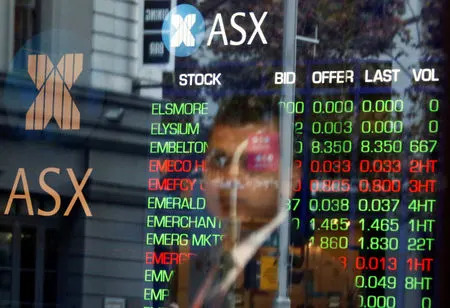(Bloomberg) -- The Philippine central bank’s interest-rate decision Thursday is expected to be a close call between a cut and a hold after inflation quickened to a nine-month high last month.
Thirteen of 23 analysts in a Bloomberg survey expect the Bangko Sentral ng Pilipinas to lower the target rate by 25 basis points to 6.25%, while the rest see the benchmark held unchanged at a 17-year high.
Governor Eli Remolona, who repeatedly signaled for months the possibility that BSP may start cutting borrowing costs as early as August, recently sought to temper expectations after inflation in July breached the central bank’s 2% to 4% goal. That makes a near-term pivot a “little bit less likely,” he said after the price print.
Still, the Philippines has reasons to deliver a cut: average inflation for the year is still within target, and the peso has strengthened against the dollar along with peers. The US Federal Reserve is also widely anticipated to ease monetary policy next month.
The appreciation of the local currency is “a factor for easing,” Finance Secretary Ralph Recto, who sits in the seven-member policymaking board, told reporters on Wednesday. At the same time, the BSP will weigh the still-robust economic growth and rising employment in its decision, he said.
Here are key things to watch at the briefing in Manila at 3 p.m.:
Inflation Path
The central bank has said headline inflation will likely follow a general downtrend starting this month after July’s uptick. Lower rice tariffs will help “significantly moderate” price gains and pave the way for the BSP lower its key rate, Remolona said earlier this month.
“While we note that there is some probability that the BSP could chose to err on the cautious side and delay its rate cut to October, the easing core inflation and lower inflation trajectory continues to support the commencement of rate cut in August,” Nalin Chutchotitham, an economist at Citigroup Inc., wrote in an Aug. 7 note.
Still, price risks remain, including a continued rise in electricity tariffs this month. Food costs could also stay elevated as some areas reel from the impact of intense rains in late July.
Economic Prospects
While the Philippines posted among the region’s highest growth rates last quarter at 6.3%, consumption remained tepid. Senators and Economic Planning Secretary Arsenio Balisacan have likewise voiced concerns on how high interest rates are hurting the economy and businesses, likely putting pressure on the BSP to shift to easing.
Remolona has also flagged watchfulness about the economy possibly performing below its potential. The central bank had said in June that economic growth may decelerate in the second half on lagged effects of its past tightening cycle.
The country’s growth momentum is waning, as can be seen from the lower-than-expected quarter-on-quarter expansion in the April-June period, according to HSBC Holdings Plc economist Aris Dacanay. This builds the case for the BSP to start its easing cycle to spur consumption and private investment, he added.
Peso Strength
The peso’s recent appreciation against the greenback could give the BSP leeway for a rate cut. The local currency rose this week to its highest level against the dollar since April.
The Philippine currency is also among the best performers in the region this month, buoyed by a recent bout of dollar weakness over concerns about the US economy and the potential Fed rate cuts.
--With assistance from Shinjini Datta and Ditas Lopez.





